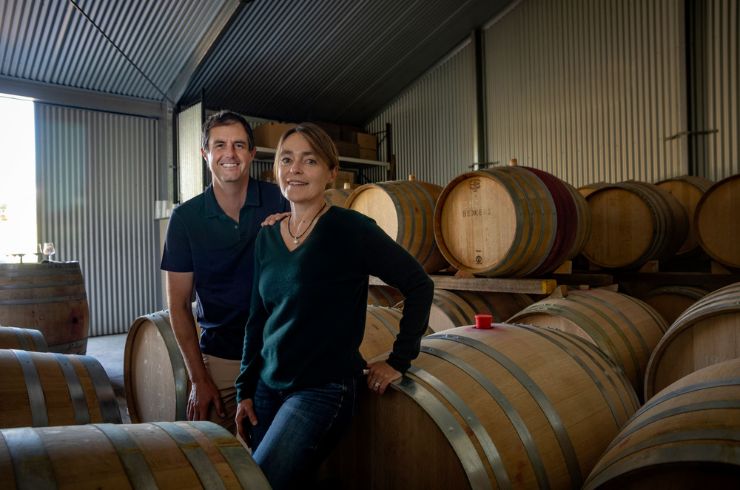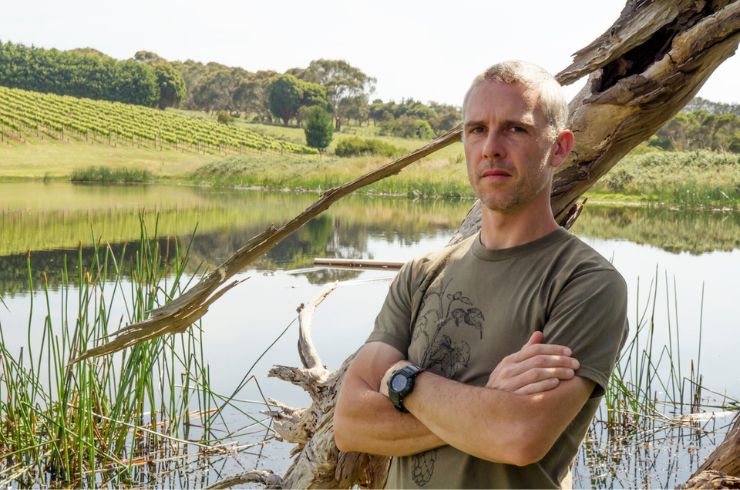“One of the great advocates of sauvignon blanc is Oz Clarke,” says Shaw + Smith’s Michael Hill Smith MW. “Some people do look down their very worldly noses at sauvignon blanc drinkers, but I remember Oz saying, ‘You would have to try very hard to find a grape variety which has brought more joy to wine drinkers around the planet’.”
It’s no surprise the fruit-driven wines from New Zealand’s Marlborough were such a hit. The field of wine can sometimes be impenetrable to those on the fringes, but sauvignon blanc usually wears its heart on its sleeve. Riesling is also an aromatic variety, but it generally assumes a dignified posture, while archetypal Kiwi sauvignon blanc checks its inhibitions at the door, throws its keys in the bowl and gets on with it.
Flavour descriptors can sometimes seem fanciful to the neophyte, while sauvignon’s readily resonate. Passionfruit? Yep, I can see that. Green capsicum? That, too. Cut grass? Sure thing! It all feels very accessible, democratic. Wine for the people. But while the grape can offer ample ready appeal, it also has a serious side. Sancerre, in the Loire Valley, has long been a go-to for its approachability as a lighter bodied, aromatic dry white, while also being defined by minerality and a more delicate fruit expression.
 Shaw + Smith founders Martin Shaw and Michael Hill Smith MW.
Shaw + Smith founders Martin Shaw and Michael Hill Smith MW.
They can also scale significant heights, with producers such as François Cotat, Pascal Cotat, Gérard Boulay and Domaine Didier Dagueneau (in neighbouring Pouilly-Fumé) making some of the world’s great wines. Closer to home, it can also excel.
“It was the first grape that dad planted at Gembrook in 1993,” says Andrew Marks of Gembrook Hill in the Upper Yarra Valley. “We weren’t sure what was going to work up here. And I was eight years old, so I had no say in the matter! But it suits our cool climate with high rainfall, and it suits these red soils, which reward aromatic grape varieties, making wines that are very pretty but not overt.”
Gembrook Hill has long made one of Australia’s leading iterations, and one of the most singular, with neither the clean cool ferment and steel approach, nor the fumé blanc angle of new oak. Rather, the wine is barrel fermented and largely matured in older oak. “I love the French concept of élevage,” says Andrew. “The wine needs time in the cellar to build the texture. We’ve always bottled the wine when we bottle our pinot and chardonnay. We haven’t changed the style, while trends have come and gone. We’ve never chased fashion; we think style outlasts fashion in every measure.”
The integrity starts in the vineyard, where Andrew spends the bulk of his time, with the sauvignon yields held low, and the rigour – leaf plucking etc. – as detailed as for the pinot noir.
“We’ve always tried to make the best wine we can. There’s something special about the natural amphitheatre – it’s a beautiful spot for grape growing – but we also respect the wine. I think a lot of people fall into the temptation of treating it as chateau cashflow.”
 Andrew Marks, Gembrook Hill.
Andrew Marks, Gembrook Hill.
That’s a sentiment echoed by Michael, who debuted the first of his and Martin Shaw’s iconic bottling in the 1990 vintage. “We took it seriously,” Michael says. We grew the best grapes we could. We bought the best grapes we could. We paid more for them, but with tighter yield constraints. We tried, and still do, to make the best wine we can, reflecting the region and the season. I know that sounds trite, but we really do. It had a lovely pink grapefruit character rather than excessive herbaceousness. And it had zing. Zing and freshness. It’s worked really well. Like Cloudy Bay – right wine, right time.”
Marlborough’s Cloudy Bay, which David Hohnen and winemaker Kevin Judd launched in 1985, can reasonably lay claim to being the catalyst for the explosive growth of sauvignon vineyards in New Zealand. “That wonderful, wonderful label,” says Michael. “That lovely, moody, misty name – it was David Hohnen at his most brilliant. It was absolute genius, and the wine was very good. There was Kiwi sauvignon blanc before David, but he was the one who packaged it in a way, served it up in a way… We owe a lot to him for the overall category.”
New Zealand now exports nearly 90 per cent of its total production, with sauvignon blanc representing about 78 per cent of total wine production (by tonnes). According to New Zealand Winegrowers Inc., total wine exports in 2024 were 278 million litres, with sauvignon blanc accounting for a whopping 247 million litres. The USA, UK and Australia are by far the biggest markets, and though the volumes have dropped from 2023 and 2022 highs, those were bumper years, well above the average. The 2024 figures for sauvignon blanc are still up from 2021, and exports are projected to grow again in 2025 with another large harvest.
New Zealand Winegrowers figures show that total vineyard land increased by 7056 hectares from 2015 to 2024. However, most varieties had modest gains, remained static or went backwards. Sauvignon blanc plantings increased by 7612 hectares, absorbing the total losses from the other varieties and accounting for all the gains. Of those 7056 hectares added, 6992 were in Marlborough. It tells a story.
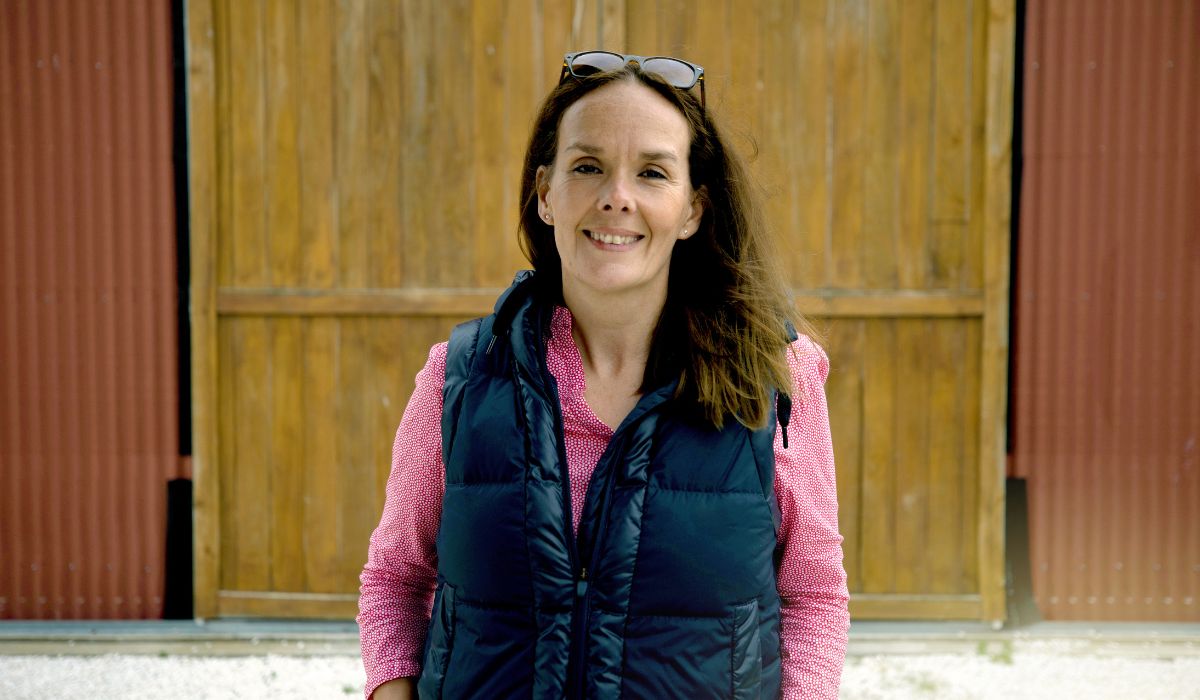 Anna Flowerday, Te Whare Ra.
Anna Flowerday, Te Whare Ra.
“Nowhere else in the wine world has achieved what Marlborough has, and become so famous so fast,” says Anna Flowerday of Te Whare Ra. “That reputation was built on the consistency of quality, and we need to protect that reputation at all costs. Once gone, it’s very hard to get back. Our focus with our two sauvignon blancs is to put 100 per cent effort at every step of the growing and making into delivering a wine that silences all the doubters and restores faith in this fabulous region and the amazing quality of the wines.”
Anna and her husband, Jason, work some of the oldest vines in Marlborough, with the family vineyard certified organic, and biodynamic principles employed. “We try not to be all things to all people,” Anna says. “We haven’t made a second tier, as the economics don’t work with our growing and production costs. The premium segment is showing some positive growth, which is very heartening. But I do think at every price point we need to remember what people love about Marlborough sauvignon blanc and deliver on that.”
Sam Davies is the winemaker at Amisfield in Central Otago. “Sauvignon blanc is still an absolute juggernaut for NZ wine,” he says. “However, there has been maturation in approaches. For us, the focus is on best expressing the variety within our organic site of lower-yielding older vines that deliver concentration of flavour and bright acidity. From there, we layer in the use of large format oak, barriques and stainless steel to best showcase the variety and where it’s grown.”
While Amisfield is perhaps best known for pinot noir and pinot gris, Sam stresses that sauvignon blanc is both important domestically and for penetration into export markets. “It’s a key wine for us in the future,” he says. “We are working on a slow replanting program to ensure longevity. Central Otago offers a different flavour profile to other regions, which is important, and the landscape, low fertile soils and climate facilitate quality over yield. And that’s not going to change anytime soon.”
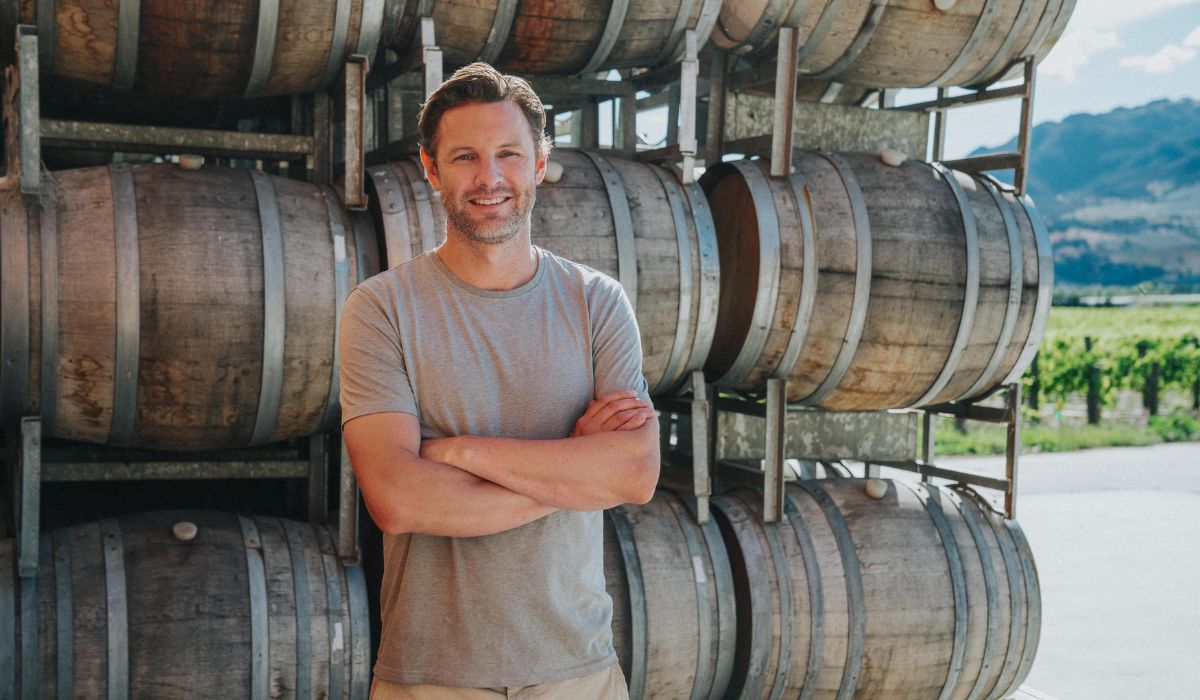 Sam Davies, Amisfield.
Sam Davies, Amisfield.
“Craggy Range was an eye-opening experience,” says Ben Mullen, referring to his stint as winemaker at the Hawke’s Bay superstar in 2014 and ’15. “Not just making clean cut, traditional New Zealand sauvignon blanc, but working with fruit from Martinborough and doing oak and lees work, different fermenting temperatures, yeast strains and the like…”
For Ben, those elements are there to frame, not occlude, the varietal effusiveness. “The variety is always going to be quite showy,” he says. “You’re always going to get those heightened green aromatics, and what I like to call savoury tropicals; things like melon skin and feijoa. My approach is to be gentle, like with chardonnay – so, a lot of lees, a lot of gross lees.”
Ben now makes two upper-tier sauvignons, both in a fumé blanc style, from the Geelong region under his Mulline label. Both are from single sites and mature vines, with Ben nuancing the oak treatment to fit the flavour profile of each site. “Sutherland’s Creek is in Austrian wood. So, finer grain, lighter toast, more structural than aromatic oak to give texture and complexity but not outshine the fruit. The Modewarre is in cigar-shaped barrels – the same oak that Dagueneau and a lot of producers in Sancerre are using. It’s more new oak, but the toast is lighter. It adds a structural edge.”
That approach is not just a style choice, with the conviction that the wines are meaningfully enhanced by cellaring. “I’d love to give them another year, but cashflow doesn’t allow that yet,” Ben says. “I would recommend five to eight years in the cellar – they’re better with time. We have such good fruit sourcing that I can make really high-end single-vineyard wines that sit with our pinot, chardonnay and syrah. And I’m comfortable putting them at that level, at that price point.”
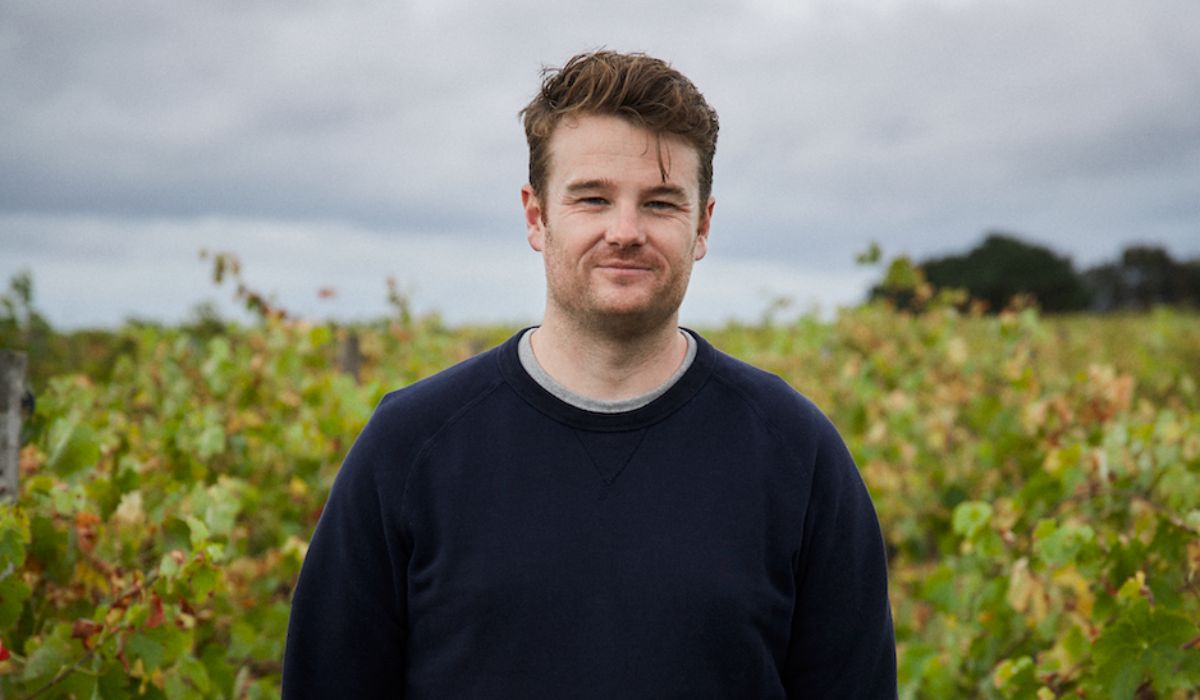 Ben Mullen, Mulline.
Ben Mullen, Mulline.
Ageability is also a key factor for Andrew, who, when the cork gods smile on the older Gembrook bottlings (now screw cap), notes that the wines from the ’90s still drink exceptionally well. “I think sauvignon blanc, made the right way, has the capacity to age, absolutely,” he says.
“They’re never going to be huge volumes,” adds Ben. “It’s more about getting the wine into as many people’s glasses to get them to understand what we’re doing. They’re food wines, sitting at the higher end of complexity. I always have great feedback when people taste them at cellar door.”
While the Mulline and Gembrook Hill wines are made to reward patience, the Shaw + Smith style is more about the here and now. “I often say to people, don’t get too carried away,” adds Michael. “It’s not a cerebral glass of wine. You’re sailing around Sydney Harbour, you’ve got some fresh oysters, the sun’s out – whacko! It’s that sort of a wine.”
While the consumption of sauvignon blanc remains relatively buoyant, the casting of the grape in the New World as one with serious wine connoisseur credentials is still a work in progress, though one resting on sound foundations. “I firmly believe that it’s a noble grape variety,” concludes Andrew. “If you put a Didier Dagueneau up against a chardonnay from Burgundy, often they can look a lot better, particularly with some time on them. They’re beautiful wines fresh and young, and they’re also beautiful, ageworthy wines.”
This article first appeared in issue #80 of Halliday magazine. Become a member to receive all four issues per year delivered to your door, digital access to over 185,000 tasting notes from 4000+ wineries and distilleries, and much more.






